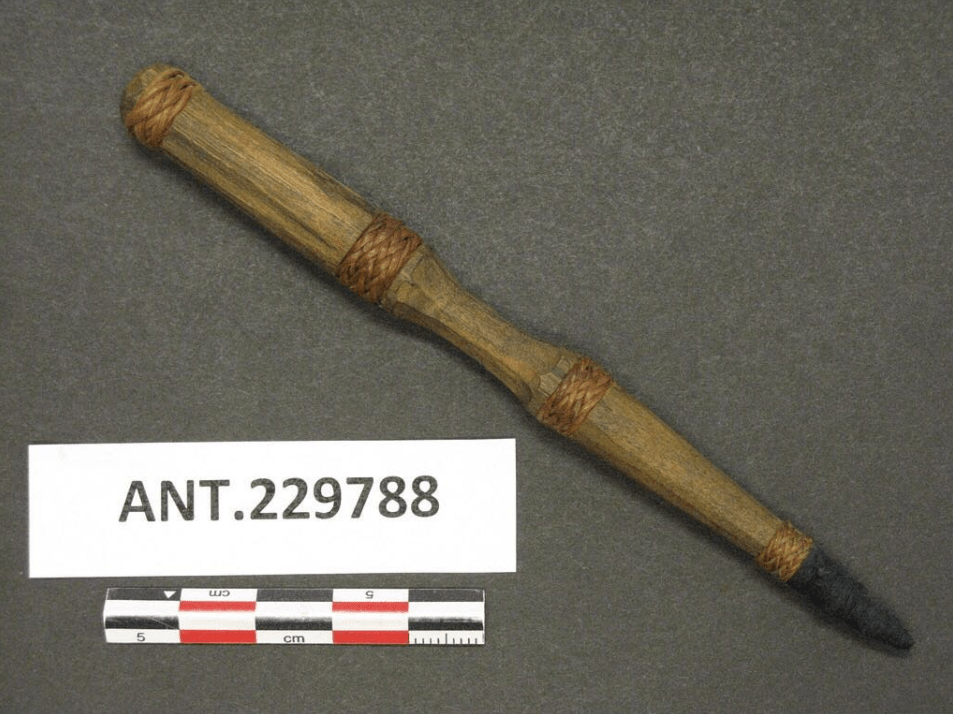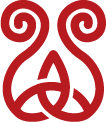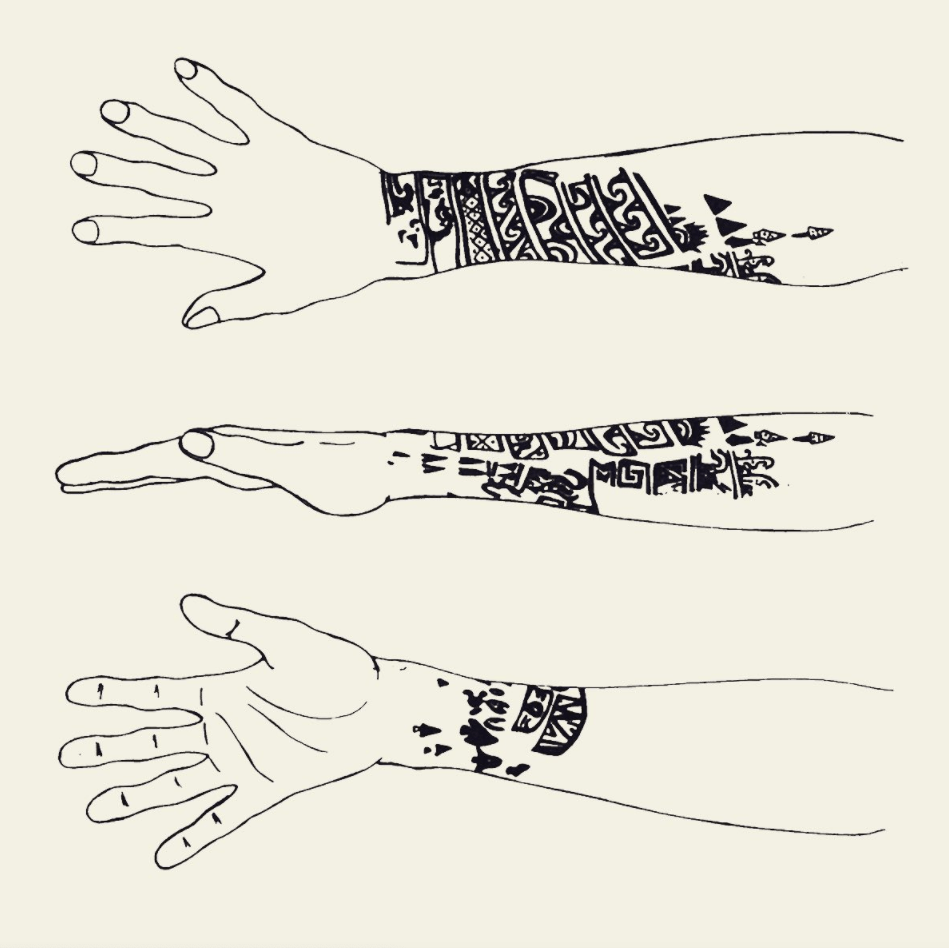
in-line tattoo tool from Banaue, Mountain Province, Philippines
This in-line tattoo tool from Banaue, Mountain Province, Philippines has a carved wood shaft and is decorated with four circlets of plaited rattan. Two metal points are bound to the tip using blue yarn. It likely was made by the Ifugao people, among whom tattooing is called “bátok.” No date is noted on the collection record.
Ifugao men and women were historically tatooed with naturalistic images invoking specific plants and animals, in addition to geometric shapes. Their tattoos were applied to – among other things – mark adulthood, demonstrate social status, and (for men) record success in battle.
For more on traditional tattooing in the Philippines, be sure to check out the work of Analyn Salvador Amores, including her chapter in #ancientink.
Image: Yale Peabody Museum of Natural History (ANT 229788)
Text-Quelle: https://www.instagram.com/archaeologyink

